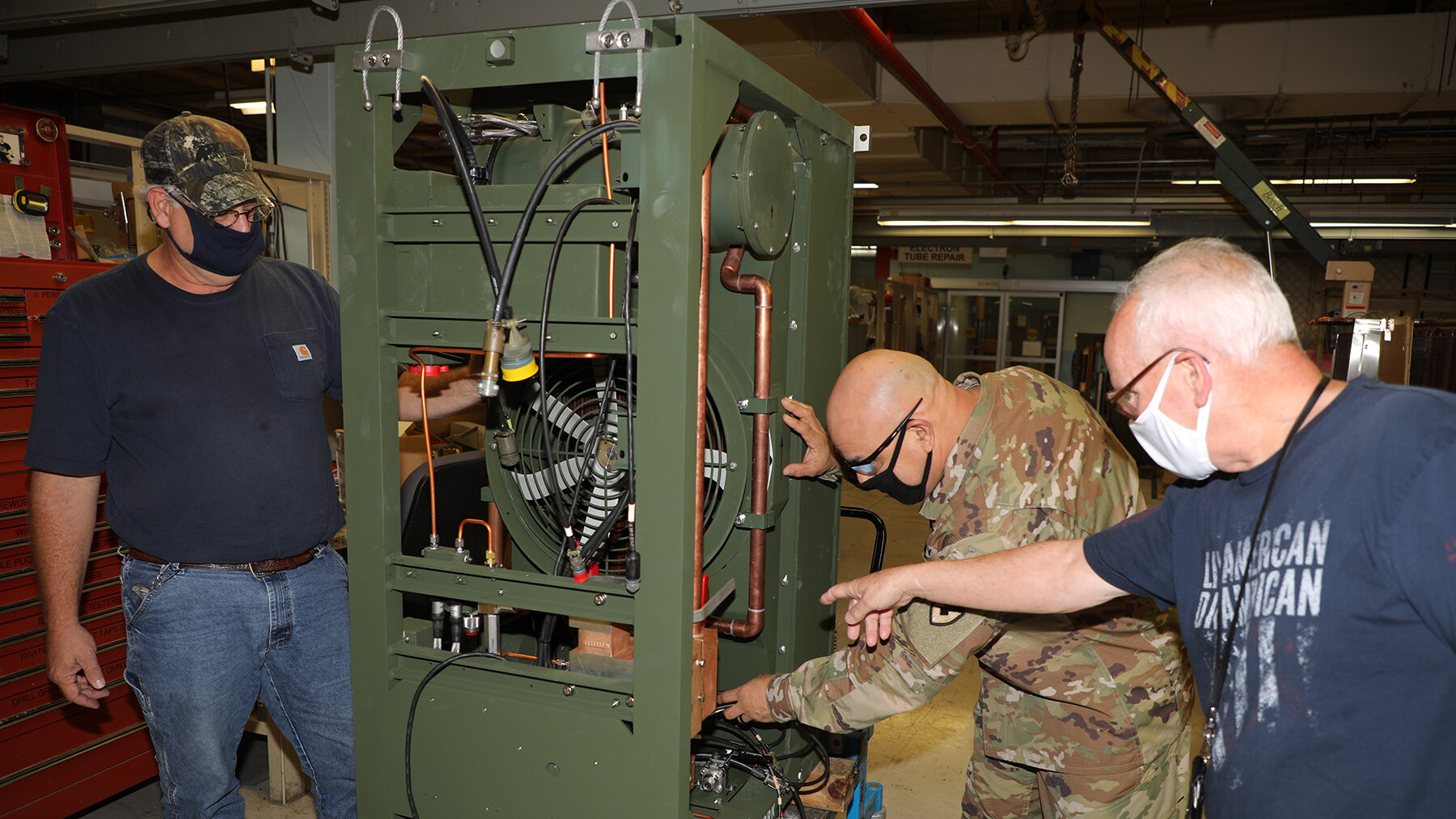
Chief Warrant Officer 3 Jesus Gonzalez (center) inspects solder joints on a cooling liquid electronic tube (CLET) in the reassembly process alongside Robert Hockenberry (right) and Brent Gordon (left) in the PATRIOT air-conditioner shop as part of the Training With Industry (TWI) internship at Letterkenny Army Depot. (Pam Goodhart/US Army)
WASHINGTON: The commander of Army Materiel Command will brief Army senior leaders in the next month about his organization’s new $16 billion, 15-year strategy to modernize the service’s organic industrial base.
AMC commander Gen. Ed Daly told reporters Tuesday that the investment to modernize the service’s organic industrial base — made up of 23 depots, arsenals and ammunition plants managed by AMC — is sorely needed.
“The organic industrial base was designed and really implemented in World War Two,” Daly told reporters at a roundtable hosted by the Defense Writers Group. “And so what we have is really a 20th-century capability to support a 21st-century Army and joint force.”
After briefing Army senior leaders, he said, he’ll take the strategy to lawmakers. The challenge the service’s organic industrial base faces is striking a balance between being able to support the Army’s critical warfighting needs, such as ammunition and rifles, with modernization.
“So in peacetime, it [the organic industrial base] has to maintain this core capability and foundational skillset,” he said. While, “juxtaposed with robotics, really investments in infrastructure, investments in computer program logic, really looking at our processes and making sure that it’s a 21st century capability to support not only the current equipment within the Army and the joint force, but everything we’re moving towards in terms of modernization.”
The Army is in the midst of a 40-year modernization, spanning from new helicopters and tanks to augmented reality systems and advanced networking tools. In a previous conversation with Breaking Defense in December 2020, Daly cited the Next Generation Squad Weapon, an Army modernization priority, as an example of how AMC can modernize its facilities.
The ammunition plant at Lake City, Mo., produces 5.56mm ammunition for M4 carbines and 7.62mm for machine gun, but the NGSW requires a 6.8mm round. Instead of adding another ammunition line at the facility, Daly told Breaking Defense in December 2020, “why don’t we look at a brand-new facility… a multi-caliber production facility that has state-of-the-art layouts and systems and technology?”
The broader strategy also seeks to address supply chain vulnerabilities brought on by contractors moving production offshore or capabilities that just lag domestically. Daly specifically cited the rare earth materials that are critical to the energetics material that make up explosives and propellants.
“Our intent is to bring some of those into the organic industrial base to reduce vulnerability over time. And so that’s what we’re working to. That’s another key piece of the organic industrial base modernization strategy,” Daly said on the Tuesday call. “It’s no secret that … China’s influence over the supply chain, and really the Pacific’s influence over the supply chain. We’re trying to reverse that.”
Army Materiel Command is preparing for the modernization effort in a number of ways, including by setting up Modernization Displacement and Repair Sites, run by the AMC’s Army Sustainment Command, to churn out decades-old equipment from units.
The service’s organic industrial base relies on a workforce of about 30,000 people, Daly said. To bring the industrial base into this century, the service will also need to modernize its workforce.
“It’s updating along not only the facilities, the processes and technologies, the robotics but also really retraining the workforce and realigning the workforce so that they can remain relevant and essential and critical to the process,” he said.
Head start: Early ’25 may be first flight for Black Hawk with T901 engine
Sikorsky is using remaining FARA dollars to test out the new T901 engine in anticipation of integrating it on a UH-60 M Black Hawk later this year.


























